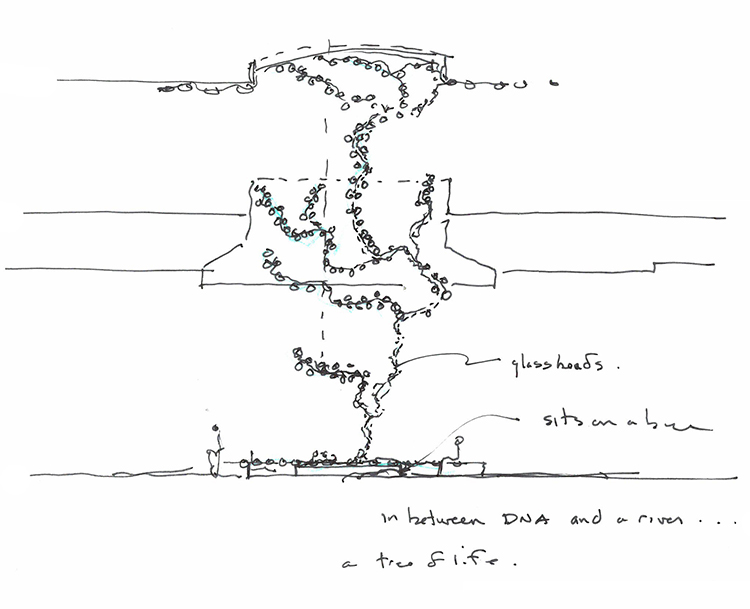New Maya Lin Sculpture for Penn Medicine Pavilion

Penn Medicine’s Pavilion, one of the largest hospital projects underway in the United States and the largest capital project in the University of Pennsylvania’s history, will feature an art installation by renowned artist and designer Maya Lin. The artwork, tentatively titled “DNA Tree of Life,” will be on display in the atrium of the new state-of-the-art facility, set to open later in 2021 on the West Philadelphia campus of the Hospital of the University of Pennsylvania (HUP).
Ms. Lin’s acclaimed work has been featured at museums and galleries around the world. Since her very first highly acclaimed work, the Vietnam Veterans Memorial in Washington, D.C. completed in 1982, Ms. Lin has gone on to a remarkable career in both art and architecture. Ms. Lin’s architecture has consistently focused on sustainable design solutions and sensitivity to site and adaptive reuse; her artworks have asked the viewer to pay closer attention to the natural world. Now, she will work with Penn Medicine to bring hope and inspiration to patients. Drawing inspiration from the shape of DNA, the extending branches of a tree, and a map of the Philadelphia-area landmark, the Schuylkill River, “DNA Tree of Life” connects nature and medical science, representing life within the hospital, and within the city.
“My approach to this piece is to create something that is uplifting, that has a sense of wonder and beauty,” Ms. Lin said. “I want to make you aware of your surroundings in the Pavilion, in this beacon of scientific advancement, connecting you to the physical and natural world around you while symbolizing the very essence of life—DNA.”
As patients enter the Pavilion, also known as HUP East, they will be greeted with Ms. Lin’s intricate art piece, displaying a hidden steel “tree structure.” The structure will be concealed with hundreds of glass beads that will reflect the sunlight that streams through the windows. In the 17-story building, the sculpture will be suspended from the ceiling, between the Connector Level—where patients and visitors navigate the HUP campus with bridges between HUP East, HUP West, and the Perelman Center for Advanced Medicine—and the ground floor of the hospital.
Art is a priority element of the Pavilion’s design. Art consultant Ivorypress, a collective comprised of experts and art advocates across the University of Pennsylvania, the Penn arts community, and Penn Medicine, have been providing their expertise and recommendations on the artistic and architecture features to enhance an environment designed to promote healing. Additionally, the committee is prioritizing artwork that is reflective of not only the Philadelphia community, but of Penn Medicine’s global reach.
“Art and design can be a transformational element of a patient’s experience,” said Regina Cunningham, Chief Executive Officer of the Hospital of the University of Pennsylvania. “It was important to select pieces for HUP East that will convey a sense of peace and healing in this new landmark for exemplary care, as well as a welcoming, vibrant atmosphere for our patients, families, and staff. Maya Lin thoughtfully designed a sculpture that connects the fundamental elements of life and science to our health system and the Philadelphia community, and we look forward to its installation as we prepare to open the doors of our new patient Pavilion.”
Ms. Lin’s “DNA Tree of Life” will be installed before the Pavilion opens in October 2021.

